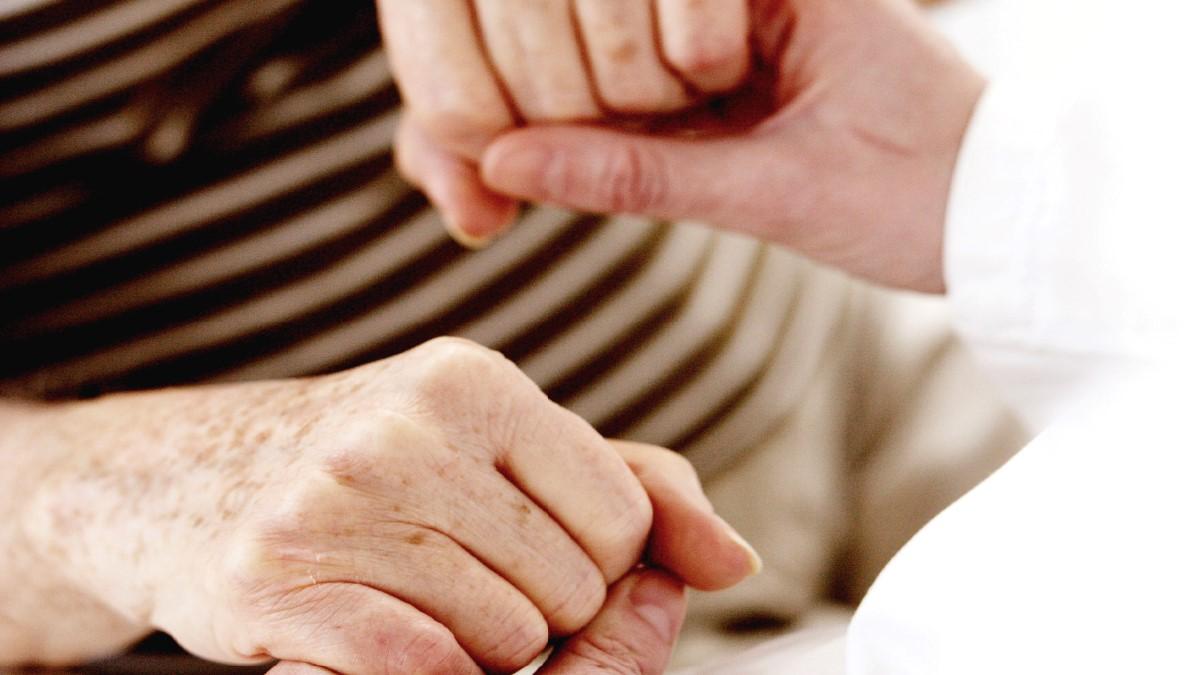Specialist palliative care physiotherapists can play a key role in improving patients’ quality of life, say Lesley Nelson and Jane Rankin
Rehabilitation in palliative care
Rehabilitation in palliative care can help people live their lives as they experience rapid change and deterioration. The aim is to optimise function and wellbeing and enable patients to live as independently and fully as possible. The approach empowers people to adapt to their new state of being with dignity and provides an active support system to help them anticipate and cope constructively with losses through deteriorating health (Tiberini and Richardson, 2015).
People receiving palliative care report functional loss as one of the most distressing symptoms. Changes in function could be a primary consequence of underlying disease or due to secondary influences, eg, side effects of treatment, bed rest/deconditioning, cachexia, and a person’s other co-morbidities or psychosocial influences. Maintaining function represents an important way of preserving independence and participation in activities that add quality of life. It is easier to maintain function than regain it once lost, therefore functional assessment is essential to proactively recognise need and ensure early referral.
Palliative care patients report functional loss as the most distressing symptom
Strong evidence supports the efficacy of rehabilitation within the palliative phase of many conditions. Interventions should be based on person-centred goal setting, parallel planning and proactive identification of functional concerns/priorities. They will incorporate elements of enablement and supported self-management (Tiberini and Richardson, 2015).
Within physiotherapy there will be an emphasis on
- Functional rehabilitation – to maintain or improve independence, reducing dependence on carers and encouraging self-management and a sense of control
- Non-pharmacological symptom management – interventions for pain, breathlessness, fatigue and lymphoedema
- Exercise prescription – individual programmes aimed at improving muscle strength and mobility
- Manual handling assessment – to guide carers and other healthcare professionals in safe techniques
Lymphoedema can be present at diagnosis or develop during the illness when it may be a sign of disease progression. It is important that any potential underlying causes such as thrombosis and extensive nodal disease are investigated and treated (NICE, 2009). Lymphoedema may occur many months prior to death and so may be amenable to management. In non-cancer patients a prevalence of 85% is reported near the end of life. The presence of palliative oedema is thought to be 5-10% of all lymphoedema referrals, but this is considered an underestimate (International Lymphoedema Framework (ILF), 2010). A key ILF principle is that health professionals can assess and treat oedema, and that family and caregivers should be involved in simple adapted treatments, where necessary and desirable.
Symptom management: Fatigue
Fatigue has been defined within oncology as:
A distressing persistent, subjective sense of physical, emotional and/or cognitive tiredness or exhaustion related to cancer or cancer treatment that is not proportional to recent activity and interferes with usual functioning (NCCN 2016).
It is a prevalent and significant symptom in all palliative care conditions.
Condition Prevalence
- Cancer 32-90%
- COPD 68-80%
- Heart disease 69-82%
- Renal disease 73-87%
- Motor neurone 44%
- Multiple sclerosis 75-95%
- Parkinson’s 33-70%
Evidence based physiotherapy intervention will include:
- Individualised exercise programmes
- Energy conservation advice regarding exercise and rest
- Mobility – advice and equipment
- Relaxation – progressive muscle relaxation
- Sleep managementSymptom management: Breathlessness
Symptom management: Breathlessness
Breathlessness has been defined as:
A subjective experience of breathing discomfort that consists of qualitatively distinct sensations that varies in intensity. The experience derives from interaction among multiple physiologic, psychological, social and environmental factors, and may induce secondary physiological and behavioural responses.
Breathlessness is a common symptom in palliative care with many possible causes
Condition Prevalence
- Cancer (general cancer outpatients) 46%
- COPD 90-95%
- Heart disease 60-88%
- HIV/AIDS (in last three months of life) 41%, 68%
- Renal disease 11-62%
Evidence-based physiotherapy intervention will include:
- Respiratory examination and comparison to respiratory baseline
- Breathing control techniques, including pursed-lip breathing if appropriate
- Relaxed breathing techniques
- Positions of ease
- Airway clearance techniques
- Oxygen therapy and nebuliser advice
- Advice on correct use of a fan
- Education: symptoms/trigger awareness and appropriate responses
- Individual exercise programmes
- Provision of mobility aids
- Steps/stairs assessment
- Activity pacing and energy conservation
- Lesley Nelson, Macmillan specialist palliative care physiotherapist and Jane Rankin, clinical cancer lead physiotherapist
Number of subscribers: 5





































